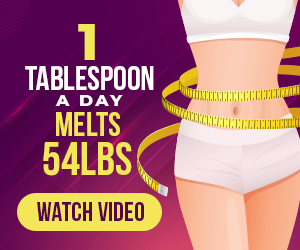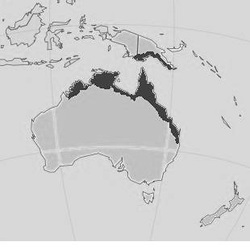Coastal TaipanOxyuranus scutellatus |

Custom Search
|

Despite its, name the species can be found in a variety of different habitats hundreds of kilometers away from the ocean, where the maximum winter temperature is higher than 20°C (68°F).
They are found in temperate to tropical coastal regions, wet and dry forests and woodlands, monsoon forests and in both natural and man made grassy areas. They have also adapted well to Queensland's sugarcane fields, where they thrive hunting the rodent population. The other subspecies the Papuan Taipan (Oxyuranus scutellatus canni) is found throughout the New Guinea island, with the higher concentrations being found in the nation of Papua New Guinea.

The coastal taipan uses abandoned animal burrows, hollow logs and in piles of vegetation and litter as shelters.
The coastal taipan is a large snake, in fact it's the largest venomous snake found in Australia and it also features the longest fangs 0,5 inches (13 mm). They are long, slender snakes with a whip-like tail. The species can grow to between 4.9 and 6.6 ft (1.5 to 2.0 m), other taipans, including the inland taipan, can reach similar sizes but tend to be slightly smaller when it comes to their average size. An average coastal taipan snake measuring 6.4 ft (1.96 m) weighs around 3 kg (6.6 lb), but the longest recorded specimen was 2.9 m (9.5 ft) with a weight of 6.5 kg (14 lb). Even larger specimens are believed to exist, measuring as much as 3.3 m (11 ft). The coastal taipan is usually a uniform light to dark brown on the upper side, but it may be almost black in color. Their belly is creamy or yellow, with some irregular yellow or orange spots. During winter months the scales tend to darken in color, helping the snake absorb the heat from the sun while basking. The Coastal taipan snake venom is rated as the 3rd most toxic in the world, only surpassed by those of the Inland taipan and the Eastern Brown, which are also Australian snakes. Their venom contains a powerful cocktail of toxins, like a neurotoxin which paralyzes the nerves of the heart, lungs, and diaphragm, leading to the suffocation of the victim. It also contains a powerful myotoxin, which destroys muscle tissue, and other toxins that cause internal bleeding. Since these snakes hunt rats and mice, they sometimes occur close to populated areas inside barns or in sugarcane fields. This brings them into contact with humans more often than its relative, the inland taipan, which has a much more toxic venom but lives in remote regions. The coastal taipan has mainly diurnal habits and is usually most active in the early hours of the day, but in hot weather conditions, it may become nocturnal. The snake actively scans for prey when hunting, using its keen eyesight, and is most often seen slithering with its head raised slightly above ground level. Once it detects the prey, it will deliver several quick bites, and then release the prey allowing it to stagger away. This way the snake reduces the chances of being harmed, particularly by rats, which can inflict lethal damage with their long claws and teeth. The coastal taipan will seek to escape any threat, but if cornered, though, it can become very aggressive and may strike repeatedly. Very little is known about the coastal taipan life expectancy in the wild, but specimens in captivity can reach 10 to 15 years of age. The species is one of the 3 found in its genus, the other are the inland taipan and the Central Ranges taipan. Diet / Feeding
This species feeds most often on warm-blooded animals, mammals like bandicoots, rats, mice and several bird species make up almost their entire diet, lizards are eaten only occasionally. Reproduction The female coastal taipan reaches sexual maturity at around 28 months of age and males at about 16 months of age. The mating season occurs anytime from March to December, but its peak is from July to October, which is springtime in Australia. In this period the conditions are optimal for incubating the eggs, and when they hatch food will be more abundant. The males engage in spectacular displays of ritualistic combat as a test of strength that may last for hours, until the strongest finally wins the right to mate. The female lays up to 22 eggs, 52 to 85 days after mating, but the average clutch size is 14 eggs. The eggs are laid in abandoned animal burrows, or in loose soil under a rock or tree root, the female will abandon the nest and the offspring. The eggs hatch 2 to 3 months later, depending on the air temperature and humidity conditions. The hatchlings measure up to 600 mm in length (23.6 in) at birth and can grow very fast under the right conditions. Conservation / Threats The coastal taipan remains common in many parts of their range, and are not considered to be endangered. In fact, in many areas, they have probably increased in abundance because of human settlement which causes the proliferation of animals such as rats and mice. Like every other snake species, the coastal taipan is protected by law in Australia, but their conservation status has yet to be assessed by the IUCN Red List.
|
Did You Know?
Found in the South American rainforests the giant green anaconda is, considering their sheer weight, the largest snake in the world. Scientific classification |
© 2014 Snake Facts About Us | Privacy Policy | Contact





